That Fit Friend is supported by its readers. I [Jake Boly] run this site myself and buy the gear I review. If you purchase through my site, I may earn commissions on sales, read more here!
Table of Contents+
I love training in barefoot shoes. They’re such a great tool for varying how much ground feedback you get when working out. Not to mention, they can be fantastic for passively building the tissues surrounding the feet and ankles.
If you’re brand new to barefoot shoes for the gym, you’ll want to acclimate to them slowly. Start by using them for more static strength sessions, then build up to workouts that are a little more dynamic. Your ankles and feet will thank you.
Not to mention, when training in a barefoot shoe, your mechanics will change due to their decreased stack height (thickness) and their zero-drop (flat) construction. I suggest using the 20% rule when using barefoot shoes for training.
Start by using barefoot shoes for 20% of your workouts, then after a month, increase their usage by another 20%. After a few months, you should be using them a lot more often.
Don’t be afraid to play with timelines based on your body’s feedback, AKA soreness levels (feeling super sore/beat up? Increase your timeline). There’s no rush to acclimate, and your body is going to do so at its own rate. Enjoy the changes and process as you go.
Barefoot Shoes for the Gym Buying Guide
- What to Buy for Lifting: Vivobarefoot Primus Lite III, $160
- What to Buy for CrossFit: Vivobarefoot Motus Strength, $200
- What to Buy for Cross-Training: Tolos Archetype 2.0, $120
- What to Buy for Athletic Sessions: Inov-8 Bare-XF, $120
- What to Buy for Under $100: Notorious Lift Radix, $99.99
- What to Buy for Powerlifting: AVANCUS Apex Power 1.5, $99
- What to Buy for Beginners: Xero Shoes Prio, $89.99
- What to Buy for Under $60: WHITIN Minimalist Shoe, $59.99

What to Buy for Lifting: Vivobarefoot Primus Lite III
The Primus Lite III is one of those GOATED barefoot shoes that I constantly go back to. It was the first barefoot shoe that I bought solely for lifting, and it’s fantastic across the board for more strength and power settings.
Strength and Versatility Tests I’ve Performed In This Shoe
- 500 lb deadlift triple
- 375 lb squat
- 275 lb walking lunges
- 300 lb sled push and pulls
- Max Mileage Ran At One Time: 2-miles
Primus Lite III Specs
- Heel-to-Toe Drop: 0mm
- Weight: 8.85 oz
- Removable Insole: Yes

Sizing Thoughts
- Width: Wide
- Narrower Feet Sizing: True to Size
- Wider Feet Sizing: True to Size. 4E+ width feet, pass on these.
- Flatter Feet Sizing: Decent for flat feet.
- Relative Sizing: Go with your normal shoe size. If you’re in between sizes, size down for a snugger fit. If you like more toe box room and have wide feet, go up.
My Full Review and Fave Alternative
- For More Info: Read My Review
- Fave Alternative: Tolos Archetype 2.0
Why I Chose the Primus Lite III
My favorite barefoot shoe for lifting and overall strength training is the Vivobarefoot Primus Lite III. This model ticks a lot of boxes when it comes to being a strong performer in the gym and when working out.
I like the width of this shoe’s toe box and think it will work with a variety of foot anatomies. The Active Sole in this shoe also provides a nice level of foot articulation and the rubber sole grips different gym floors well.


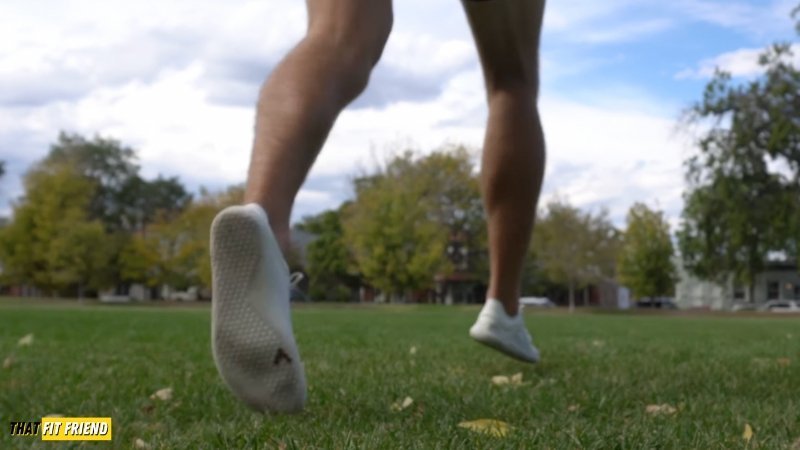

I like the width of this shoe’s toe box and think it will work with a variety of foot anatomies. The Active Sole in this shoe also provides a nice level of foot articulation and the rubber sole grips different gym floors well.
I also like that you can take the insole out in this shoe to get closer to the ground for things like deadlifts and that the internal portion of the shoe is finished. This is great for durability purposes and for providing you with a variety regarding how this shoe fits and feels.
The final aspect to like about the Vivobarefoot Primus Lite III is that it’s a good shoe for daily wear as well. This model has a clear aesthetic which makes it a dynamic option for both working out and wearing daily.
What to Buy for CrossFit: Vivobarefoot Motus Strength
The Motus Strength is one of the few barefoot shoes I’d confidently say work great for CrossFit. These shoes have awesome durability for protection from rope climbs and burpees, and the outsole wrap does a good job promoting upper security as well.
What I’ve Enjoyed Using These Shoes for
- 570 lb deadlift single
- 245 lb reverse lunge triples
- 90 lb walking dumbbell lunges
- 20 rope climbs in a single session (to assess friction from high-volume WODs)
- Broad jump for distance
- Max Mileage Ran At One Time: 800-meters
Motus Strength Specs
- Heel-to-Toe Drop: 0mm
- Weight: 8.85 ounces (size 10 high-top model)
- Removable Insole: Yes
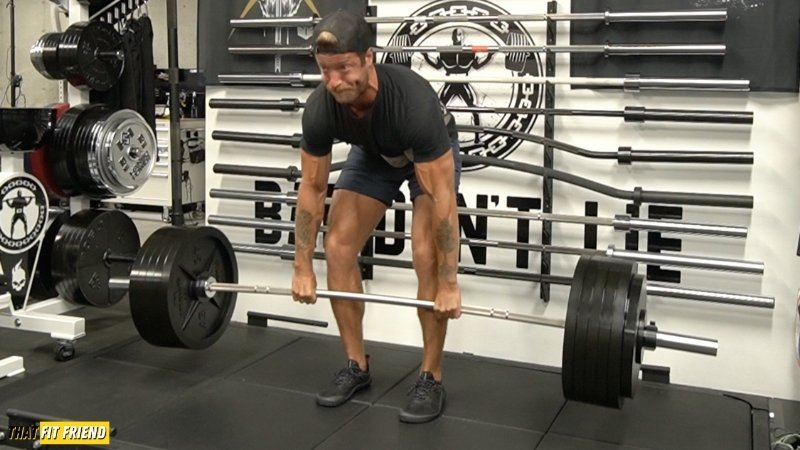
Sizing Thoughts
- Width: Wide
- Narrower Feet Sizing: True to Size
- Wider Feet Sizing: True to Size. 4E+ width feet, pass on these.
- Flatter Feet Sizing: Decent for flat feet.
- Relative Sizing: Go with your normal shoe size. If you’re in between sizes, size down for a snugger fit. If you like more toe box room and have wide feet, go up.
My Full Review and Fave Alternative
- For More Info: Read My Review
- Fave Alternative: Xero Shoes 360
Why I Chose the Motus Strength
The Vivobarefoot Motus Strength is a fantastic barefoot shoe for CrossFit and it’s one of the first models I’ve thoroughly enjoyed across all of my CrossFit WODs. This shoe works well for CrossFit for a few reasons.
For starters, the upper of the Motus Strength is more rigid than other barefoot shoes. This is great for prolonging this shoe’s durability during rope climbs and it’s great for protecting the feet from abrasion.
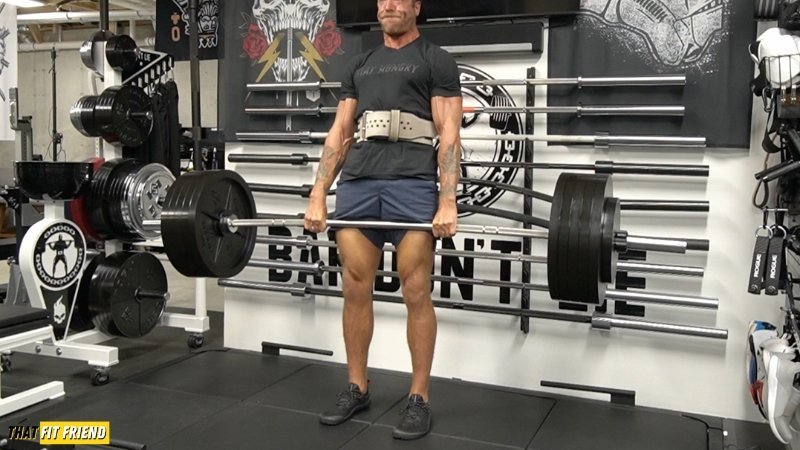



The grippy outsole of this shoe is also a perk for CrossFit WODs. This model has more aggressive lugs than its peers like the Primus Lite Knit and III which is great for locking the feet down when squatting, snatching, and clean & jerking.
This shoe’s outsole wraps are also a nice subtle perk that boosts this shoe’s performance for CrossFit. The reinforced toe box and lateral side walls give you security and durability which is clutch since this shoe’s price point is higher.
What to Buy for Cross-Training: Tolos Archetype 2.0
The Tolos Archetype 2.0 is one of my go-to shoes for training and casual wear. For cross-training specifically, it’s the sportier fit and lower-profile upper that wins me more in this shoe. If you enjoy sock-like fitting shoes, you’ll like this model a lot.
What I’ve Enjoyed Using These Shoes for
- 545 lb deadlift single
- 225 lb walking lunges
- 90 lb walking dumbbell lunges
- 250 lb sled pushes and pulls
- Max Mileage Ran At One Time: 800-meters
Archetype 2.0 Specs
- Heel-to-Toe Drop: 0mm
- Weight: 8.85 ounces (size 10 high-top model)
- Removable Insole: Yes

Sizing Thoughts
- Width: Wide
- Narrower Feet Sizing: True to Size
- Wider Feet Sizing: True to Size
- Flatter Feet Sizing: Decent for flat feet.
- Relative Sizing: Go with your normal shoe size. Exceptionally wide feet, size up a half-size.
My Full Review and Fave Alternative
- For More Info: Read My Review
- Fave Alternative: Motus Strength
Why I Chose the Tolos Archetype 2.0
The Tolos Archetype 2.0 has been a stellar barefoot shoe for my cross-training and athletic-focused workouts. This shoe is super popular in the movement culture crowd and that’s for good reason.
I like the Archetype 2.0’s sock-like fit for cross-training because it gives this shoe a seamless fit and feel. When jumping and doing explosive exercises, this shoe moves well with the foot and has a good amount of upper security.




The outsole tread and design of the Archetype 2.0 are also nice for promoting grip on different surfaces. This shoe works well on turf, wooden platforms, and rubber gym floors so they’re a good pick for versatile training settings.
Another perk of the Archetype 2.0 that transcends lifting and cross-training is that they look good for a fair price. If you want a shoe for cross-training and wearing out and about then it’s tough to fault the Tolos Archetype 2.0’s performance.
What to Buy for Athletes: Inov8 Bare-XF
The Inov8 Bare-XF has come into play with its updated construction. I like this shoe for athletic sessions because it’s incredibly well-rounded and has a sportier sole for multi-directional exercises and plyometrics. Plus, the BOOMERANG Footbed is a win.
What I’ve Enjoyed Using These Shoes for
- 455 lb deadlift single
- 245 lb power cleans
- 90 lb walking dumbbell lunges
- 350 lb sled pushes and pulls
- Max Mileage Ran At One Time: 1.5-miles
Bare-XF Specs
- Heel-to-Toe Drop: 0mm
- Weight: 11.15 oz (size 10 model)
- Removable Insole: Yes
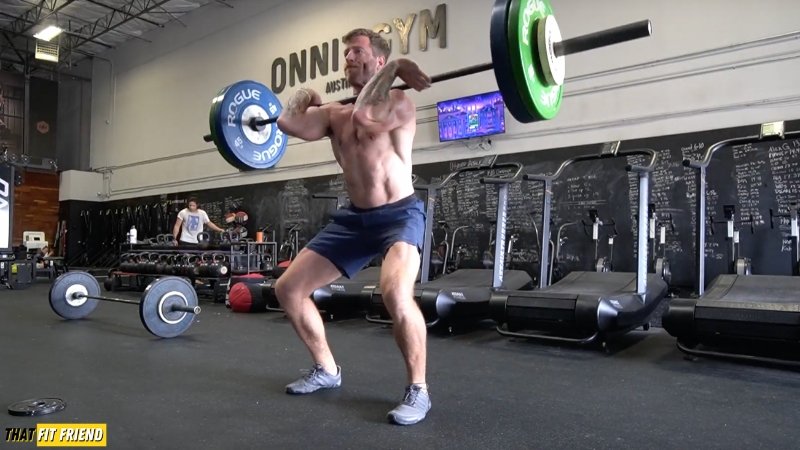
Sizing Thoughts
- Width: Wide
- Narrower Feet Sizing: True to Size
- Wider Feet Sizing: Size up a half size.
- Flatter Feet Sizing: Great for flat feet.
- Relative Sizing: Go with your normal shoe size. Wide feet, size up a half-size.
My Full Review and Fave Alternative
- For More Info: Read My Review
- Fave Alternative: Tolos Archetype 2.0
Why I Like the Bare-XF for Athletes
When talking barefoot shoes for athletes, I’m looking at a shoe’s ability to perform across pretty much every type of workout. Flexibility, breathability, durability, and grip are all key factors that help the Bare-XF excel in this vertical.
As pointed out above, I describe my training as being more athletic these days. The Bare-XF has been a go-to barefoot shoe of mine when I have workouts that blend things like heavy deadlifts and lunges paired with plyometrics and conditioning circuits.


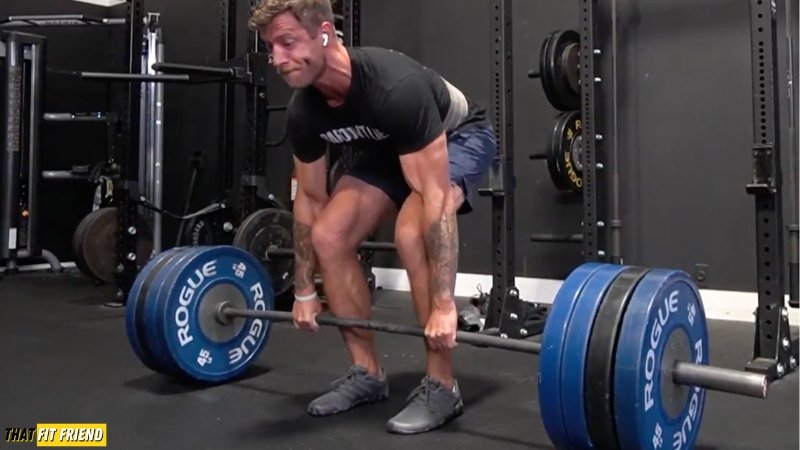
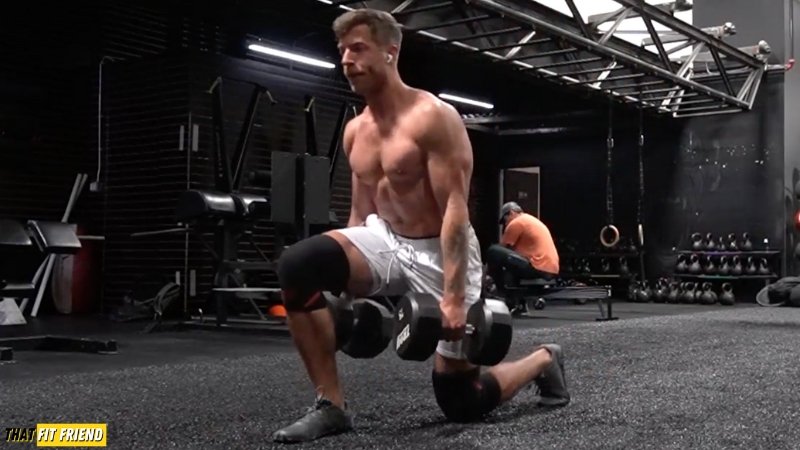
The rubber outsole on this model has an awesome grip, and the meta-flex break in the forefoot helps this shoe articulate when being explosive and doing single-leg and balance-focused work. I noticed this most when doing heavy lunges and sled pushes.
I also thoroughly enjoy the upper on this shoe and how well it breathes. If you like sock-like fitting and feeling barefoot shoes, too, you’ll appreciate its feel. The final thing that I appreciate about this model is its BOOMERANG Footbed. The additional bounce and cushion it provides is awesome for a wide range of athletes exploring barefoot shoes, IMO.
What to Buy for Under $100: Notorious Lift Radix
The Radix can be a great option for the budget shopper who wants a barefoot shoe for a little bit of everything but with an undertone of a powerlifting bias. These are fantastic for lifting and work better for cross-training than their close peers, like the AVANCUS Apex Power.
What I’ve Enjoyed Using These Shoes for
- 475 lb deadlift fives
- 405 lb sumo deadlifts lb
- 80 lb walking dumbbell lunges
- 300 lb sled pushes and pulls
- Max Mileage Ran At One Time: 400-meters
Radix Specs
- Heel-to-Toe Drop: 0mm
- Weight: 8.95 oz (size 10 model)
- Removable Insole: Yes
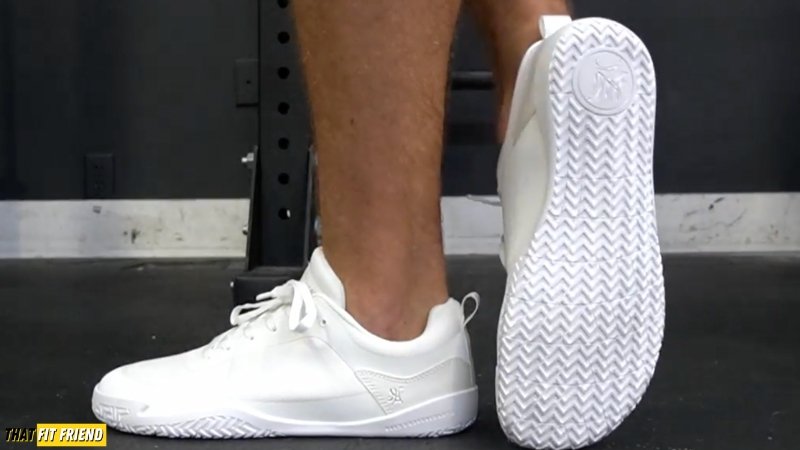
Sizing Thoughts
- Width: Wide
- Narrower Feet Sizing: True to Size
- Wider Feet Sizing: Size up a half size.
- Flatter Feet Sizing: Great for flat feet.
- Relative Sizing: Go with your normal shoe size. Wide feet, size up a half-size.
My Full Review and Fave Alternative
- For More Info: Read My Review
- Fave Alternative: AVANCUS Apex Power
Why I’ve Enjoyed the Radix
To be quite honest, I wasn’t expecting to like the Notorious Lift Radix as much as I have. As Notorious Lift’s first pass at a barefoot shoe with a price of $100, I figured it would be so-so, but I’ve been pleasantly surprised with this model.
This shoe’s claim to fame includes its stack height, grippy sole, and minimalist branding. The Radix has a stack height of 3.3mm, and the internal construction is finished if you take the insole out. The stack height is fantastic for giving you maximum ground feel when training.
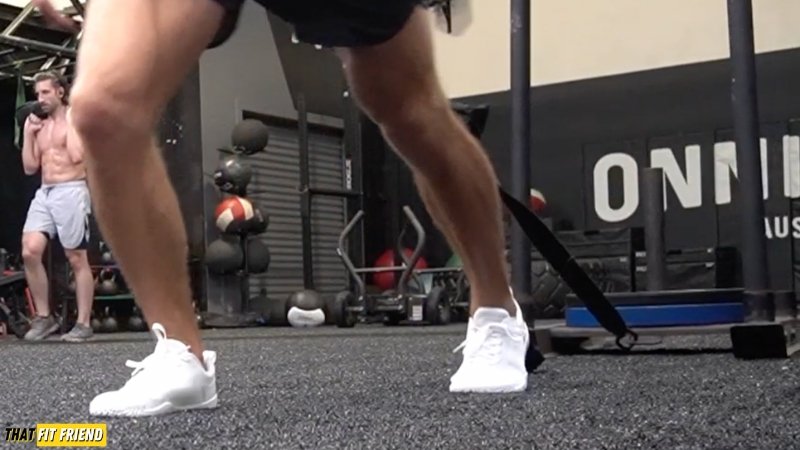
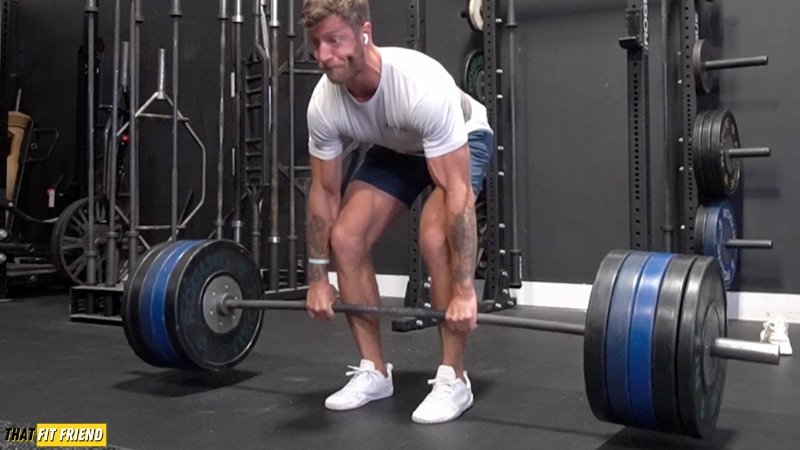
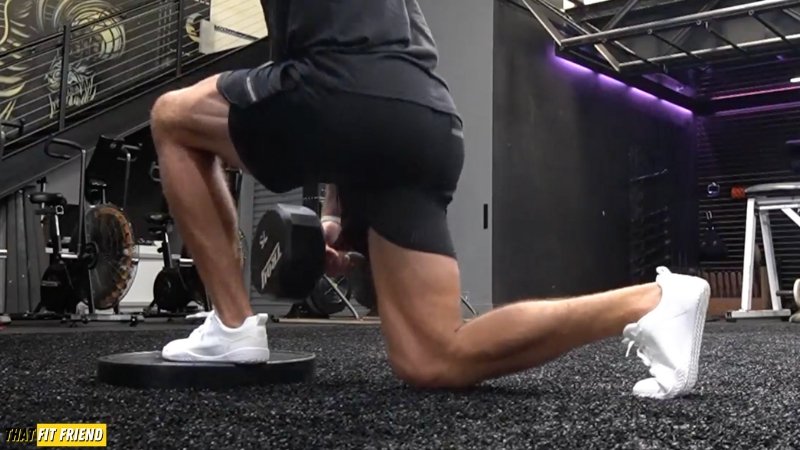

When deadlifting and training legs, the Radix allows you to fully feel the ground under you, so to my purist friends, you’ll want to explore this option. In addition, the uber-minimal stack height has been awesome for giving this shoe maximal articulation when flexing the midfoot and forefoot.
Another perk of this shoe that isn’t related to its performance in the gym is its simplistic construction and branding. I mentally put this shoe into the same “do-it-all” category as the Tolos Archetype 2.0, with this model being a little more on the lifting end of that spectrum.
What to Buy for Powerlifting: AVANCUS Apex Power 1.5
For powerlifting, it’s tough to fault the AVANCUS Apex Power models. The 1.5, 2, and high-top are all exceptional and they perform very similarly so I’d suggest going with the model with the price point and boot (low-top vs high-top) that aligns with you.
What I’ve Enjoyed Using These Shoes for
- 525 lb deadlift fives
- 235 lb power cleans
- 215 lb walking barbell lunges
- 280 lb sled pushes and pulls
- Max Mileage Ran At One Time: 400-meters
Apex Power 1.5 Specs
- Heel-to-Toe Drop: 0mm
- Weight: 10.55 oz (size 10 model)
- Removable Insole: Yes

Sizing Thoughts
- Width: Wide
- Narrower Feet Sizing: True to Size
- Wider Feet Sizing: True to Size
- Flatter Feet Sizing: Great for flat feet.
- Relative Sizing: Go with your normal shoe size. Narrow feet, go down a half-size.
My Full Review and Fave Alternative
- For More Info: Read My Review
- Fave Alternative: Notorious Lift Radix
Why the Apex Power 1.5 Landed Here
Its grip — simple and sweet. All joking aside, the Apex Power 1.5 is a fantastic option for anyone wanting a barefoot shoe primarily for lifting and strength training. More specifically, powerlifters will resonate with this shoe’s performance.
Of all the barefoot shoes on this list, the AVANCUS Apex Power 1.5 (now V2) has awesome traction. Whether you’re deadlifting sumo and conventional or bench pressing, I’m confident you won’t have slippage issues in this whatsoever.




This model is also a strong pick for static strength workouts and hypertrophy sessions outside the big three. It has good articulation when doing single-leg exercises, and its aggressive outsole wrap helps to lock down the foot from a 360-degree context.
I like the width of this model as well and appreciate how its forefoot can accommodate 4E-width feet with relative ease. The more spacious upper volume contributes to its wider fit, along with its midfoot width and lack of aggressive forefoot taper.
Best Beginner Shoe for Lifting: Xero Shoes Prio
A lot of lifters and athletes get their start with barefoot shoes in the Xero Shoes Prio. It’s one of those foolproof shoes that can do a little bit of everything, and it doesn’t break the bank, which is a nice perk of them.
What I’ve Enjoyed Using These Shoes for
- 505 lb deadlift fives
- 275 lb power cleans
- 195 lb walking barbell lunges
- 250 lb sled pushes and pulls
- Max Mileage Ran At One Time: 2.5-miles
Prio Construction Specs
- Heel-to-Toe Drop: 0mm
- Weight: 8.85 oz
- Removable Insole: Yes

Sizing Thoughts
- Width: Medium/Wide
- Narrower Feet Sizing: True to Size
- Wider Feet Sizing: True to Size. 4E+ width feet, pass on these.
- Flatter Feet Sizing: Great for flat feet.
- Relative Sizing: Go with your normal shoe size.
My Full Review and Fave Alternative
- For More Info: Read My Review
- Fave Alternative: Inov8 Bare XF
Why I Chose the Prio
My favorite beginner barefoot shoe for lifting is the Xero Shoes Prio. This barefoot shoe is what I would consider a tried and true barefoot shoe that works well in a variety of contexts.
The Xero Shoes Prio can work well for lifting, casual running, daily wear, and pretty much everything else. This model has a durable sole and upper construction that helps it be a dynamic barefoot shoe in a variety of performance contexts.

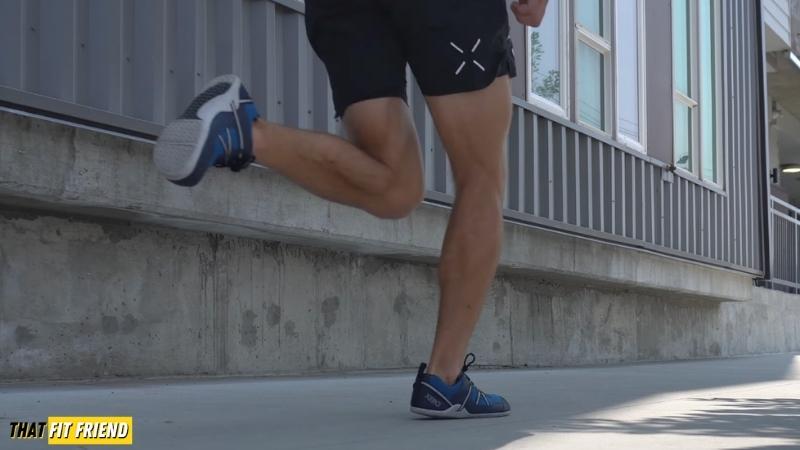


I also like that this shoe has a removable insole with a finished internal construction. If you’re new to barefoot shoes this is great because it provides you with a little bit of variance to acclimate to this style of footwear.
Regarding price, the Xero Shoes Prio costs $89.99 USD which is less than the other performance-specific barefoot shoes featured in this list. As a first barefoot shoe for beginners, I think the Xero Shoes Prio is a good pick.
What to Buy for Under $60: WHITIN Minimalist Shoes
It’s really tough to beat the WHITIN shoes when it comes to finding a good barefoot shoe for training for less than $60. These tend to be wicked durable and have a great width to accommodate a wide range of foot widths.
What I’ve Enjoyed Using These Shoes for
- 475 lb deadlift triples
- 225 lb walking barbell lunges
- 75 lb over the shoulder sandbag throws
- 180 lb sled pushes and pulls
- Mileage Ran At One Time: I didn’t use them for running.
Specs to Know
- Heel-to-Toe Drop: 0mm
- Weight: 10.15 oz
- Removable Insole: Yes

Sizing Thoughts
- Width: Wide
- Narrower Feet Sizing: True to Size
- Wider Feet Sizing: Size up a half size.
- Flatter Feet Sizing: Great for flat feet.
- Relative Sizing: Go with your normal shoe size in these unless you have 3E+ width feet.
My Full Review and Fave Alternative
- For More Info: Read My Review
- My Fave Alternative: AIRHAS Barefoot Shoe
Why I Chose the WHITIN Model Here
It’s really tough to fault the WHITIN Minimalist Shoes regarding price. WHITIN is an Amazon-owned company that has a variety of minimalist shoes and styles that generally range from $30-$60 USD.
Compared to the other models on this list, these are by far the most cost-efficient barefoot shoes on this list. This model works well for its price and it can also be a good option for beginners who want to spend the least amount possible.




This shoe has a rubber sole that grips different surfaces well and in the gym, these shoes do an adequate job. Their upper is fairly durable for their price and the lacing system is decently secure.
The only two drawbacks to these shoes are their smell and appearance when they first arrive. These shoes have a strong rubber smell when they’re brand new, and their appearance is not the best. For example, my girlfriend says I have dinosaur toes and feet when I wear them.
How I’ve Tested the Shoe Featured
I don’t know about you, but I’m sick and tired of big content sites and “influencers” discussing barefoot shoes for training when they’re not truly testing a shoe’s potential or training hard themselves day in and day out.
I’m what many describe as a “hybrid athlete” [oh, such a trendy term these days], so I’m routinely blending strength, power, and cardio in singular workouts. In doing so, I’ve gotten awesome exposure to many barefoot shoes that work better or worse for certain activities.
When I test barefoot shoes for working out, I place them on a spectrum of performance that I then cross-reference with their peers. My training in barefoot shoes ebbs and flows, but I perform consistent tests on every single model to build this context.

Above is what I mean when I say performance spectrum. The ideal options for versatility will land somewhere in the middle. From there, you can dive deeper into barefoot shoes for lifting or running, and different construction features will contribute to a shoe’s performance in these verticals.
As you read through my list, I implore you to ask yourself what your weekly training looks like. From there, you’ll be able to better narrow down the picks that will align with you and cross-reference my breakdowns to assess pros, cons, and performance.
Are Barefoot Shoes Good for Lifting?
Barefoot shoes can be good shoes for lifting for a couple of reasons. Before diving into these reasons though I want to make it clear that barefoot shoes can be great footwear options for lifting, but they’re not an end-all-be-all.
For example, I personally like rotating barefoot shoes in with my training shoes and weightlifting shoes because each style of footwear will be slightly better for certain contexts.
I think it’s important to keep an objective eye in regard to your footwear usage and to not fall into the trap of being “this is the best and only thing that works.” Below are two of my favorite reasons for using barefoot shoes in my training.
1. Great for Deadlifts and Deadlift Variations
If you love to deadlift and regularly hit different deadlift variations with your training, then you’ll enjoy how barefoot shoes feel for this performance context.
A barefoot shoe’s minimalist stack height, thin sole, and wide construction are fantastic for helping you get closer to the ground and promote stability.
In the context of deadlifts and deadlift variations, this can be great because it helps you cut down on the total range of motion that you need to lift weight and it can help you better root the feet through the floor which can help with power production in some contexts.
If you’re really trying to optimize your deadlift performance, then it’s hard to fault barefoot shoes and how their construction support deadlifts.
2. Good for Foot Articulation and Active Foot Exercises
Another reason why barefoot shoes can be great for lifting is for the contexts of promoting foot articulation and building the feet. The thin soles on barefoot shoes promote their ability to easily bend and move with the natural mechanics of the foot.

This is great for anyone working to train their feet doing things like active foot exercises. It’s also a perk for lifters that want a high level of ground feedback for sensory purposes and for creating biases in how they’re sequencing the displacement of load through certain parts of the foot.
For example, if you’re tackling something like walking lunges in barefoot shoes, then you’ll likely notice that the shoes move really well with you and provide you with a high level of maneuverability.
How Should Barefoot Shoes Fit?
Generally, I recommend sizing your barefoot shoes so you have between .3″-6.” of space at the end of your shoe’s toe box. This is generally a good range for most foot anatomies and it doesn’t make barefoot shoes feel too cramped when working out.
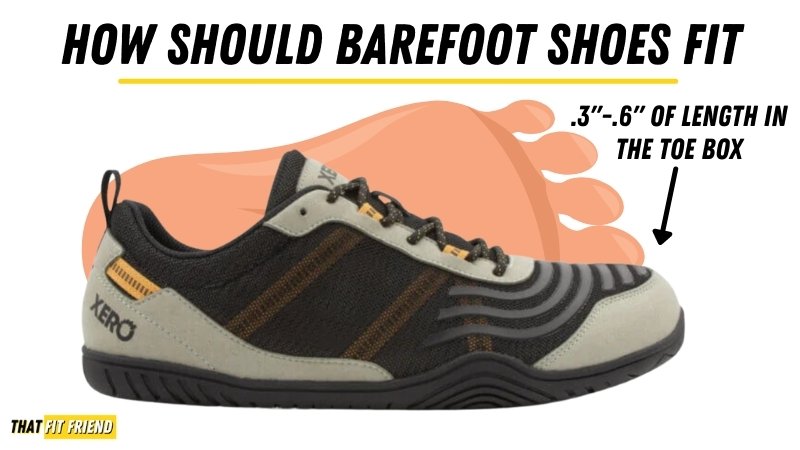
If you have a more narrow foot, then you may want to stay on the lower end of this range, and if you have a wider foot, then you may want to opt for the larger range here. With so many different foot anatomies, barefoot shoe sizing needs to be individual.
This range is also generally a good bet for preventing any form of heel slip in your shoes. However, if you have additional barefoot sizing and fit questions, drop a comment below and I can try to help you out accordingly.
What Does Zero Drop Mean?
Zero drop indicates that a shoe’s heel-to-toe drop is 0mm. This means that the base of the heel and forefoot are sitting even with one another in a flat position.

Barefoot shoes are often referenced as having zero-drop construction, which simply means that the barefoot shoe’s heel-to-toe drop is 0mm. This is standard for pretty much all barefoot shoes since their purpose is to promote and flat and “natural” fit and feel that replicates being barefoot.
If you’re interested in the nitty-gritty details of using a zero drop shoe for lifting, then I’d suggest checking out my flat shoes for lifting article. This piece of content goes into more depth on the use of flat shoes for lifting and the contexts in which they’re useful.
Takeaway Thoughts
Barefoot shoes can be great footwear options for lifting and working out. They come with minimalist soles and zero drop constructions which can be useful and beneficial in certain lifting contexts.
With so many barefoot shoes on the market, it can be overwhelming trying to find the perfect pair of barefoot shoes for lifting.
If you have any questions on the barefoot shoes mentioned above, drop a comment below or reach out to me personally via Instagram (@jake_boly).


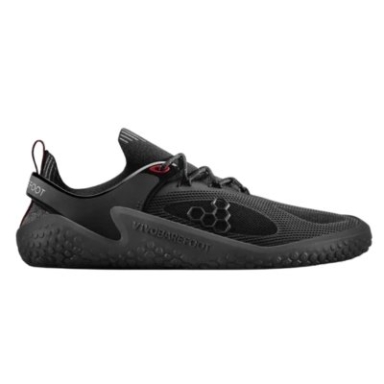
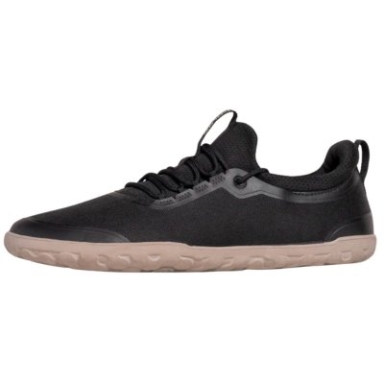
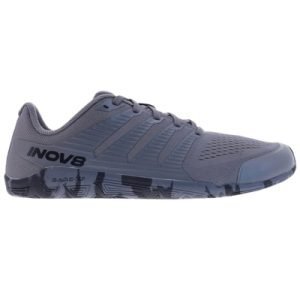
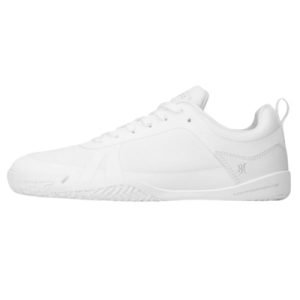
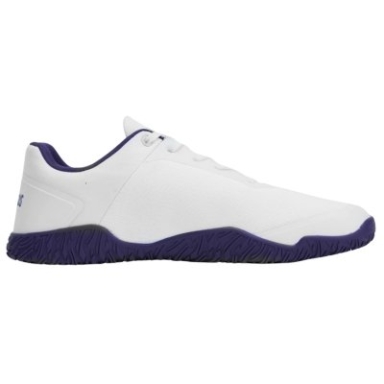





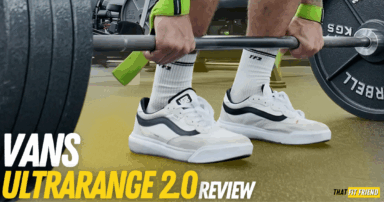

Jeff
I was going to buy the Xero Prio shoes based on this article. Seems like they are discontinued now? They still show them on the site but a lot of the choices are out of stock for my size. I reached out to them and they said they have no plans to restock them. Looking for a good alternative from someone else if anyone has any suggestions.
Follow up Q, why the Prio specifically? Can suggest better options based on the why you like them!
Bernardo
Great article! What are your thoughts on Merrell Vapor Glove 5?
Thank you! I used to rock the older models and liked them, but haven’t had a chance to test the 5 thoroughly yet. They remind me of the Bare-XF 210 V3 from Inov-8. This is perfect timing because I bought a pair a couple of days ago because Merrell is having a nice sale atm. Stay tuned for a full review, friend!
Lana
This article has so many ads I couldn’t even find the shoes amongst the huge ads
Ah, I’m sorry the UX was sub-par for you and the ads were populating in poor locations. The ads do help keep the business alive and going though, so I apologize on that front!